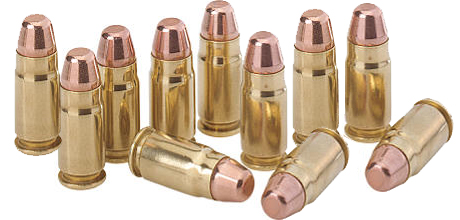Loading the .357 Sig

The .357 Sig has a reputation for being difficult to reload because inexperienced reloaders have problems with it. The two most common problems are poor headspacing (where the rounds either won't chamber, or have inconsistent ignition) and bullet setback (where the bullet will be too easily pressed into the case when you chamber the round). Both of these problems can be avoided by following proper reloading practices.
Headspacing
The .357 Sig is supposed to headspace on the case mouth or on the shoulder, depending on who you believe. Some of the reloading
manuals (Lyman 49th Edition for example) say that it headspaces on the mouth. The C.I.P. (think of them as the European version
of SAAMI) says that it headspaces on the shoulder. My experience has been that it depends on the gun. Some chambers are
so long that it's clear that the cartridge is going to headspace on the shoulder no matter what.
If your reloads won't chamber in your gun, even though 'everything' measures within spec, then you might not have pushed the shoulder back far enough (this is uncommon). If you're getting erratic cartridge ignition and a lot of 'light strikes' with your reloads but not with factory ammo, then it is likely that you're pushing the shoulder back too far (this is the more common problem).
The foolproof way to go is treat the .357 Sig like a rimless bottleneck rifle case, and size it so that it headspaces on the shoulder for your gun. Here's how to do it:
- Take a fired case, and measure the distance from the case head to a point about midway on the shoulder. I did this using a Hornady Bullet Comparator with a .416" insert.
- Set the sizing die depth so that the shoulder on the sized case is pushed back 0.003" shorter than the fired case.
- Do a small lot and fire them to make sure they feed and shoot OK.
Keep in mind that cartridges sized this way may not run right in other guns, but they'll work in your gun.
Bullet Setback
Bullet setback is a problem because the .357 Sig's short neck won't provide enough hold on some bullets. Most of the
problem is caused by people using the wrong bullets, or belling the case mouth too much. The .357 Sig is a 9mm. Part of the allure of this cartridge
is that there's a huge selection of bullets available. The trouble is that a lot of them won't work. Look at the shape of most 9mm jacketed bullets.
They're long and pointy (when compared to a .45 or 10mm bullet) and have less full-bore diameter bearing surface (as a percentage
of overall bullet length).
When you load some of these bullets into the .357 Sig case and set the OAL to what is specified in the manual, you can end up loading a cartridge where the short neck and the short bullet bearing surface don't entirely line up. This makes a bad situation worse. This usually happens when an inexperienced reloader uses the data in a manual for a bullet that is the same weight, but a different shape than the one in the manual (like using the data for a Speer Gold Dot 115gr JHP for a Rainier plated 115gr bullet).
There are two things you can do that will minimize the chances of bullet setback occurring. One is to use bullets specifically designed for the .357 Sig (such as those made by Speer). If you can find bullets with a cannelure, you can roll crimp the cartridge (because you'll be headspacing on the shoulder). Really light bullets (such as those intended for loading the .380) do not work very well in the .357 Sig.
The other thing you can do is to select a powder and charge weight that requires a compressed load. The powder will keep the bullet from setting back. There are a number of powders with compressed loads listed in the various load manuals for .357 Sig. I've had good results with IMR 800X.